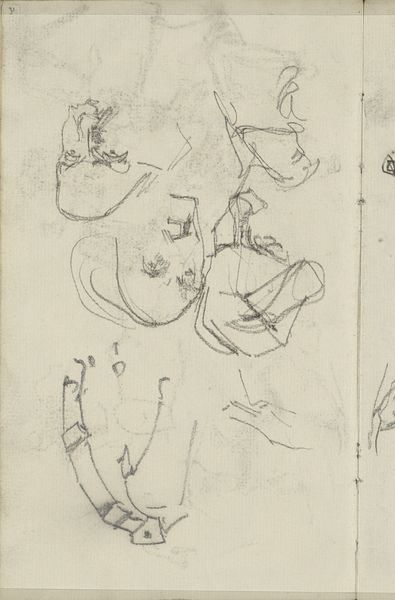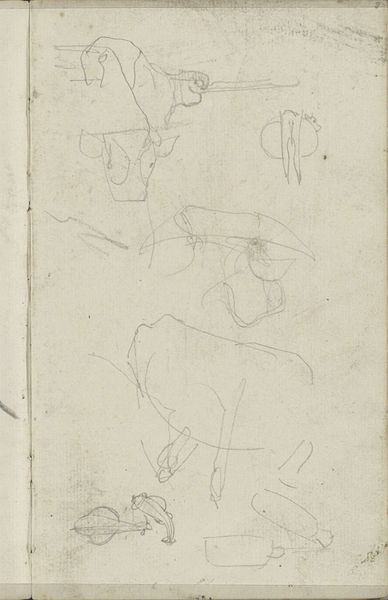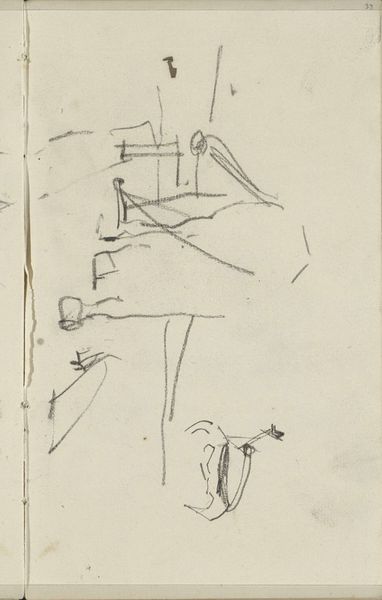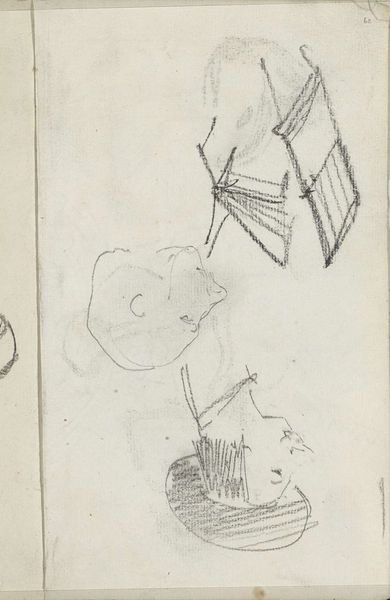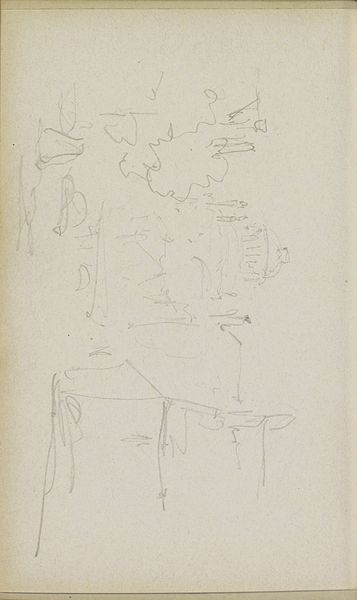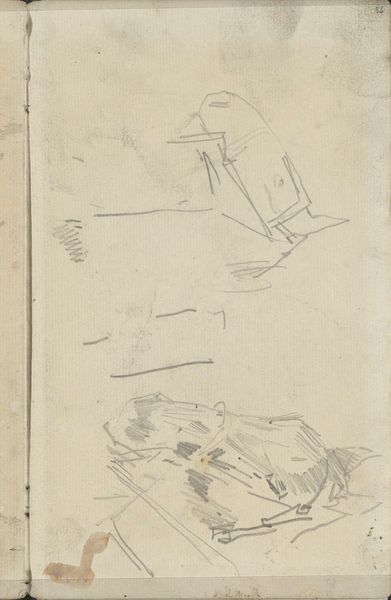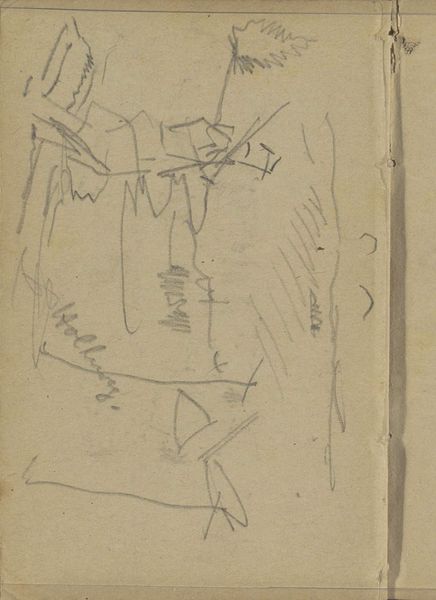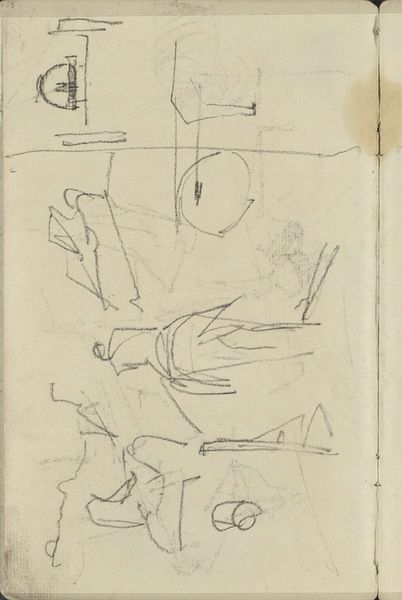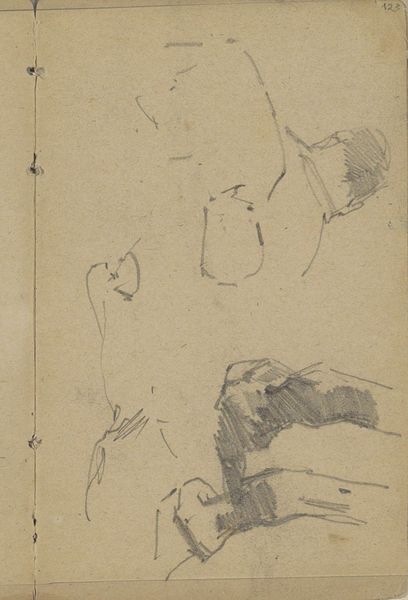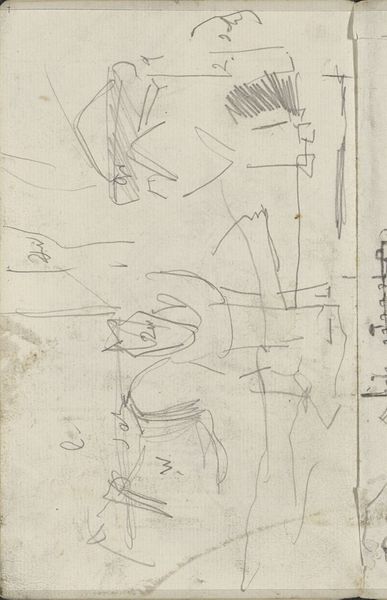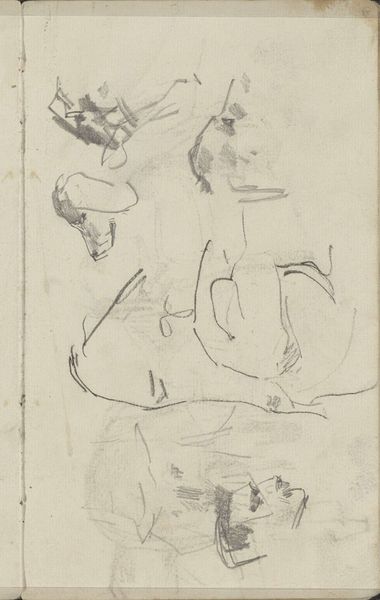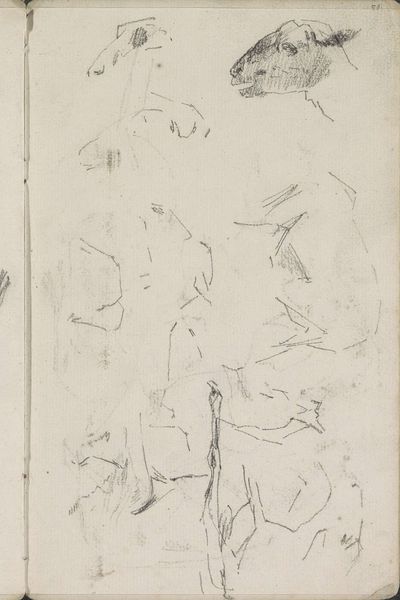
drawing, pencil
#
portrait
#
drawing
#
impressionism
#
figuration
#
pencil
Copyright: Rijks Museum: Open Domain
Curator: Take a moment to observe "Figuurstudies," a pencil drawing by George Hendrik Breitner, created between 1880 and 1882. It's currently held here at the Rijksmuseum. What are your initial thoughts? Editor: It strikes me as an intimate glimpse into the artist’s process, like flipping through his personal sketchbook. The figures, quickly sketched, have a vulnerability to them, unburdened by the performativity often found in formal portraiture. Curator: I agree. These fragmented studies offer insight into Breitner’s approach. The pencil lines are evocative, capturing gesture and form with incredible economy. It reminds me of earlier sketchbooks, those of Villard de Honnecourt in particular. The practice pages point to his deep study of the figure as essential for artistic development, a crucial understanding in the creation of lasting images. Editor: And the casual arrangement of these studies seems to democratize the artistic process, dismantling notions of a singular, perfect image. Instead, we are confronted with the beauty inherent in the act of observation and the multitude of possibilities inherent in portraying the human form. You mentioned lasting images: it almost poses the question of what makes an image last in collective memory. Curator: The persistence of certain images does lead to collective narratives of memory and experience. We often remember partial images from our past. These fragmentary studies mimic that phenomenon in ways, emphasizing select elements and details. But I wonder if the unfinished aspect makes it more, or less, impactful on a viewer encountering it today? Editor: I would argue that the incompleteness fosters a space for personal engagement, and a reflection on broader social and cultural norms, as well. We as the viewers complete it, really. Consider the implications of showcasing such a raw, unpolished depiction in a space traditionally reserved for finished works. Curator: That disruption challenges conventional notions of artistic creation. Looking back to symbolic meanings inherent in images of people and daily life, how are those disrupted through this lens? Are those concepts undermined or recontextualized through these casual drawings of human activity? Editor: It invites a new interpretation that celebrates the process over the product, highlighting that progress comes through studying people within lived experience. "Figuurstudies," by resisting the idealized representation, can encourage critical awareness of what and whom society values—or undervalues. Curator: Indeed, a constant renegotiation. Looking closely at it now, the lines almost form a visual palimpsest of artistic inquiry, layer upon layer of observations, each mark a testament to the evolving relationship between artist, subject, and medium. Editor: It shows, visually, that how we look informs what we see and then, ultimately, what we remember and value.
Comments
No comments
Be the first to comment and join the conversation on the ultimate creative platform.
